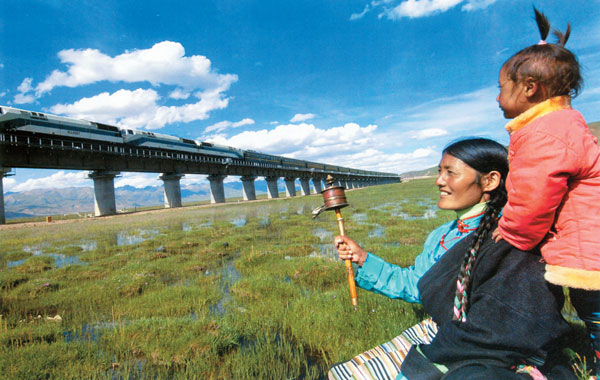"One Belt, One Road" lights up Nepal's railway dream

"It is the common dream of every Nepali to travel from Kathmandu to Pokhara by train." said Nepal's former Prime Minister Khadga Prasad Oli in 2016 new year speech on TV.
"That's something we have been desiring for a long time." Oli's speech was impressive according to a Nepali business man in his 40s, who speaks fluent Chinese and does stainless steel business in Guangdong and other Chinese provinces by the name of Paladi.
Nepal faces inconvenient transportation, take Kathmandu and Pokhara the resort city for example, the two cities are 140 km apart, due to bad road conditions, usually it takes 5 to 7 hours by bus, or one can choose a plane which is expensive and easily affected by the weather.
Nepal started to build railways in 1920s. The first rail was established near the Nepal-India border, and it aimed to transport timber to India. Nepal's total operative railway expansion has not reached 100 km in the last 90 years.
In 1973, the then king of Nepal, Birendra, expressed his willingness to further strengthen ties with China, in a meeting with Chairman Mao Zedong. Mao responded that China would build a railway to Lhasa and that it would terminate in Kathmandu, Zeng Xuyong, former ambassador of China to Nepal stated for his biography.

On July 1st, 2006, the Qinghai-Tibet Railway was opened to traffic. Border, the first secretary of the Nepali government who worked in Lhasa, witnessed that memorable moment.
In that year, Oli as vice prime minister and foreign secretary stopped by Lhasa during a visit to China. He was told by Border that China decided to extend the Qinghai-Tibet Railway to Shigatse, the biggest city in Tibet, which is only 500 km away from the border town of Giyrong, he suggested that Nepal should take the opportunity to require China to build the rail to Nepal's border.
In July 2014, the Lhasa-Shigatse railway was opened to traffic. In December, Gyirong-Re Suowa bilateral port which was 160 km from Kathmandu was officially opened for operation.
In March 2016, during Oli's visit, Nepal's railway construction was put on the agenda, the two sides agreed to push forward significant programs under the "One Belt, One Road" initiative, the two governments will communicate over the construction of China-Nepal trans-border railway as well as railways in Nepal, and supported related enterprises to begin early-stage preparation work.
Border, who thinks of himself as a "railway dream catcher" believed that one day, China's railway will stretch to the Gyirong border and eventually enter Nepal.
"Reports say that Tibet received 20.18 million domestic and international visitors in 2015, achieving 28.2 million yuan in tourist revenue, which are 11 and 15 times higher respectively than that before the Qinghai-Tibet railway was opened. If one in ten of the tourists was to Nepal via the railway, that would be 2 million people which is a significant number. So that Nepal as one of the most underdeveloped countries will become prosperous step by step." Border said.
Your Comment
Name E-mailRelated News
-
;
-
-

-
Qinghai-Tibet Railway receives high appraisal from Hong Kong jour
From three years into one day: Princess Cheng Wen “returns to her parents home” becomes convenient.
-
-
-

-
Qinghai-Railway does not affect migratory patterns of Tibetan ante
Since 2004, data from surveys indicate that animal migration along the Qinghai-Tibet Railway indicate that animals usage of the passageways gradually increased from 56.6% to 100% today.
-
-
-

-
Travelling on the Qinghai-Tibet railway
According to the China Railway Corp, the Qinghai-Tibet Railway had carried 115 million passengers and moved 448 million tons of goods as of May.
-
Based in Lhasa, Tibet Vista is a Tibet travel agency that specialized in Tibet permit, and Tibet tours for both private and group travelers at a local price!
•4 Days Lhasa City Group Tour from USD 460 •8 Days Everest Base Camp Group Tour from USD 850 •15 Days Mt.Kailash Group Tour from USD 1780 •2016 Tibet Train Tours from Beijing, Shanghai, Chengdu, Xining,etc










